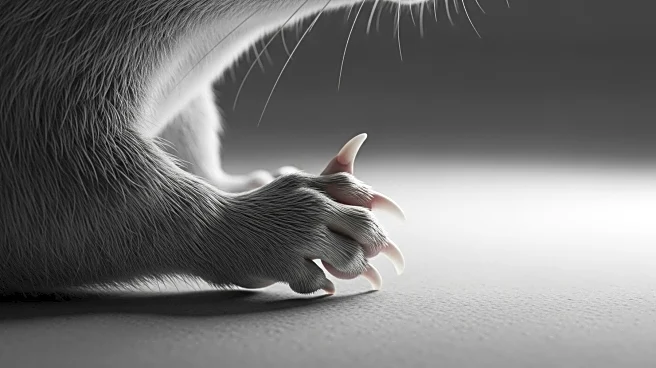What is the story about?
What's Happening?
A recent study published in Science has revealed that most rodents possess thumbnails instead of claws, a trait that may have contributed to their widespread success across the globe. Researchers from the Field Museum in Chicago examined hundreds of rodent specimens to document the presence of thumbnails, which are found in 86% of the genera surveyed. This feature is believed to provide rodents with greater manual dexterity, allowing them to handle and consume high-energy foods like nuts more efficiently. The study suggests that the evolution of thumbnails in rodents may have been a significant factor in their ability to diversify and thrive in various environments.
Why It's Important?
The discovery of thumbnails in rodents offers insights into their evolutionary success and adaptability. Rodents make up nearly half of all mammal species and are found on every continent except Antarctica. The ability to handle food with thumbnails may have given rodents a competitive edge, enabling them to exploit resources that other animals could not. This research highlights the importance of physical adaptations in the survival and proliferation of species, providing valuable information for understanding biodiversity and ecosystem dynamics.
What's Next?
The study opens avenues for further research into the evolutionary biology of rodents and other mammals. Researchers may explore the correlation between thumbnails and habitat preferences, as rodents with thumbnails are more likely to live aboveground or in trees. Additionally, the findings underscore the significance of museum collections in scientific research, suggesting that more discoveries could be made by examining existing specimens. Future studies may investigate the role of thumbnails in other aspects of rodent behavior and ecology.
Beyond the Headlines
The presence of thumbnails in rodents also raises questions about convergent evolution, as primates, including humans, have evolved nails independently. This parallel evolution suggests that similar environmental pressures can lead to comparable adaptations in different species. Understanding these evolutionary processes can provide deeper insights into the mechanisms driving biodiversity and species survival.
AI Generated Content
Do you find this article useful?

















